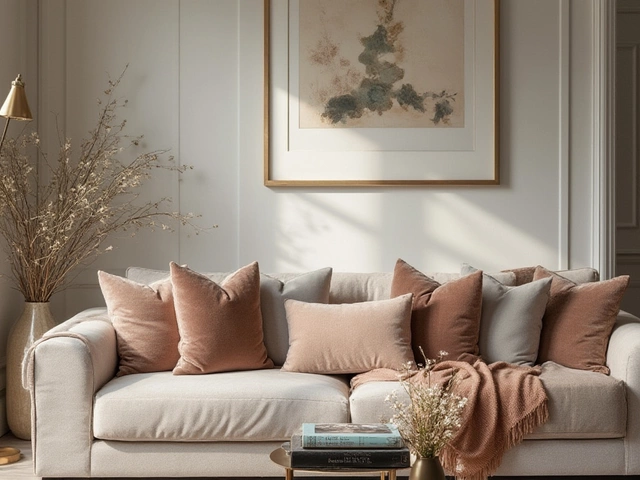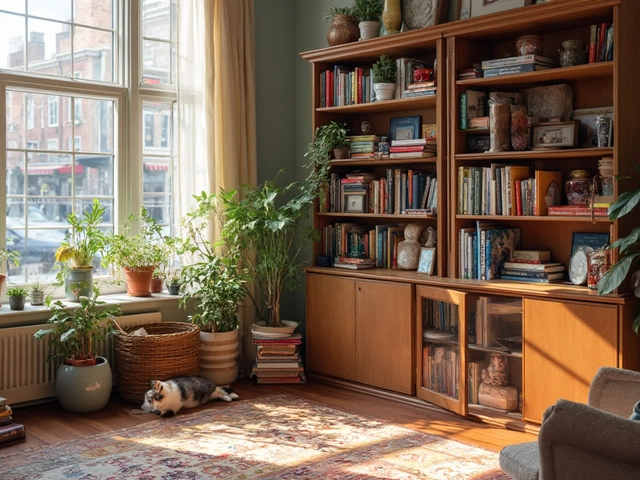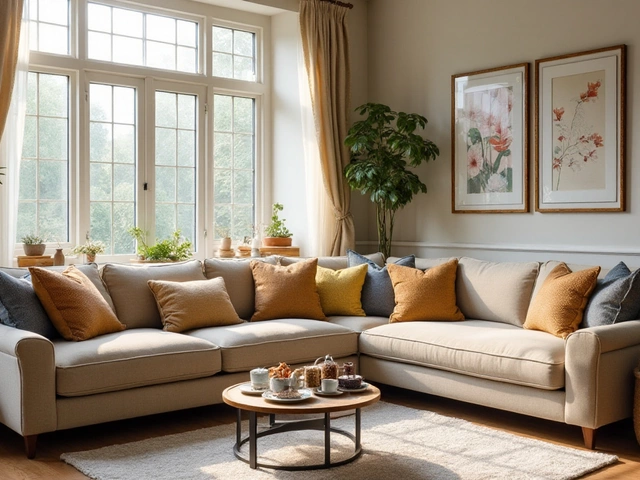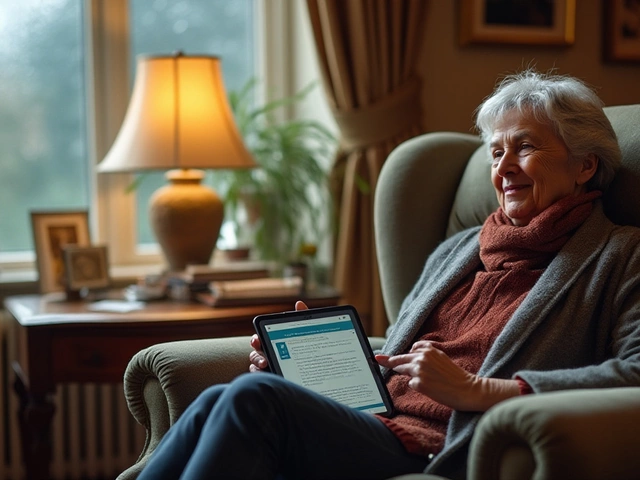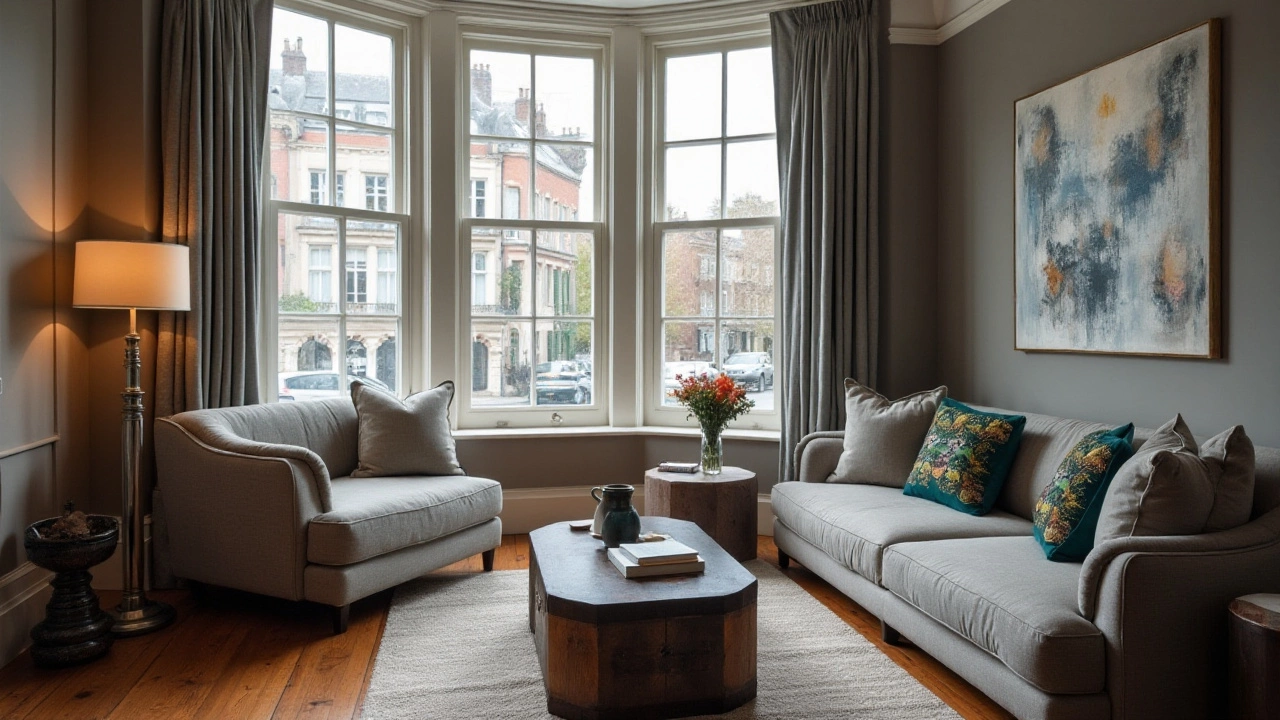 2
Jan,2025
2
Jan,2025
In the world of home furnishings, few colors have dominated the past decade quite like gray. This neutral shade has seeped into living rooms, transformed bedrooms, and graced kitchens with its understated elegance. But as the calendar turns to 2025, whispers in the interior design community suggest that the age of gray might be waning.
The popularity of gray furniture originally stemmed from its versatility, effortlessly complementing various styles ranging from minimalistic to eclectic. However, design is an ever-evolving realm, influenced by a myriad of factors including cultural shifts and technological advancements. Today, vibrant hues and warm undertones are nudging their way into the spotlight, challenging gray’s supremacy.
Join us as we explore what sparked the gray craze, examine why this shade may be seeing its twilight, and provide ideas for those who still adore the timeless charm it offers. Whether you're a homeowner contemplating a makeover or an enthusiast of interior design trends, this exploration into the fate of gray furniture offers food for thought.
- The Rise of Gray Furniture
- Current Trends in Interior Design
- Factors Affecting Gray's Popularity
- Alternative Color Trends
- Future Outlook for Gray Furniture
- Mixing Gray with Other Colors
The Rise of Gray Furniture
Gray, with its myriad shades and undertones, has long been seen as a refuge from the chaos of bright colors in the world of interior design. The surge in popularity of gray furniture began earnestly in the early 2010s, as homeowners sought a middle ground that balanced sophistication with neutrality. At first, gray was the go-to for minimalist settings. Its unobtrusive nature allowed it to blend seamlessly with metals, wood, and glass—a perfect partner for the often austere, clean lines of minimalist design. This newfound love for gray was not just a matter of aesthetics; it reflected a shift in how people wanted their spaces to feel.
Many credit the rise of gray not just to its versatility, but also as a cultural pivot driven by the economic climate of the time. In the aftermath of economic downturns, charming but subdued colors like gray became symbols of resilience and stability. Designers turned to gray as an anchor, a dependable hue that whispered elegance in times when shouting was unnecessary. Another compelling reason was gray's magic trick: the ability to make spaces feel larger. Light gray tones, in particular, bounce light around a room, creating an illusion of widened spaces and offering breathing room in ever-shrinking urban homes.
The flexibility of gray also meant it could play different roles in different rooms. A dark ash gray sofa could exude warmth in a sun-drenched living room, while lighter shades provided a calm background in bedrooms, allowing for bold personal touches to take center stage. Kris Amundsen, an interior design writer, once observed, "Gray is the color of complexity... because it is neither black nor white but a divergence of both," describing the tone's fashionable duality and appeal. It was this complexity and neutrality that attracted many, but that wasn’t all there was to it.
Social media played a substantial role too. Platforms like Pinterest and Instagram showcased homes and spaces where gray was the star—sleek gray kitchens, comforting gray bedrooms, and modern gray offices filled feeds worldwide. These platforms acted as both inspiration sources and catalysts, propelling the gray trend into suburban homes and urban lofts alike. As algorithms favored interactions, grays continued trending, painting thousands of pins and posts every single day. It became the silent language of modern chic, aligning with a no-nonsense aesthetic ethos.
The industrial style revival around warehouses, lofts, and urban residences also contributed to gray’s meteoric rise. Exposed concrete, often a natural gray, started being celebrated for its raw beauty, and as industrial elements found their way into homes, gray furniture joined the fray, seamlessly integrating into the scheme. This trend speaks less about spontaneity and more about our longing to recall and preserve something raw and real. So, gray furniture carved out a niche where once beige and white stood unchallenged, offering systematic options and endless configurations. Simply put, it became the canvas of the new generation's artistic expression in home decor.
Current Trends in Interior Design
Interior design is an ever-shifting landscape where change is the only constant. As we delve into 2025, new styles are emerging, reshaping our homes and influencing the way we perceive personal spaces. A significant trend that's gaining traction is the embrace of bold and dynamic colors. While neutrals like gray offered calm and cohesion in vibrant environments, today's interiors are leaning towards energetic compositions. Think lush greens, deep blues, and even striking terracotta shades—each bringing a different atmosphere and sense of individuality to spaces.
This shift isn’t just about color; it's also about texture and form. Organic shapes and sustainable materials are being favored more than ever. From furniture crafted using eco-friendly resources to wall panels made of recycled substances, there is a burgeoning appreciation for interior components that tell a story of craftsmanship and responsibility. Texturally, designers are playing with contrasts. Velvet, raw wood, and metal are appearing side by side, each contributing to a layered aesthetic that’s both tactile and visually engaging.
Technology continues to shape interior paradigms. Smart homes, once a novelty, are now a staple in modern design. From automated lighting that sets the mood to furniture pieces that integrate tech for work-from-home setups, ease of living is central. The rise of mixed-reality applications allows clients to virtually walk through spaces before committing to changes, offering a new dimension to design consultation. This trend aligns with the growing personalization of spaces, where interiors are tailored to align with the homeowner's rhythms and lifestyle preferences.
There's an interesting divergence toward biophilic design—a concept where natural elements are intentionally incorporated into interiors to connect inhabitants with nature. This approach sees the fusion of botanical colors and textures with urban settings, providing psychological comfort and tranquillity. Imagine open spaces filled with natural light, living green walls, or even water features; they're elements designed to subliminally link us with the wild while creating a serene home ambiance.
Quoting renowned designer Emma J. Mellor,
"In the dance of trends, harmony lies in blending the old with the avant-garde. The key is in choosing elements that resonate personally with homeowners, crafting backdrops for unforgettable life moments."This balance is crucial, and increasingly, homeowners want spaces that narrate tales of adventures, travels, or dreams. As gray takes a step back, other palettes are ready to enrich these stories with their vibrancy and depth. Such is the beauty and complexity of modern interior design, a domain where rules fade, and imagination holds the canvas.
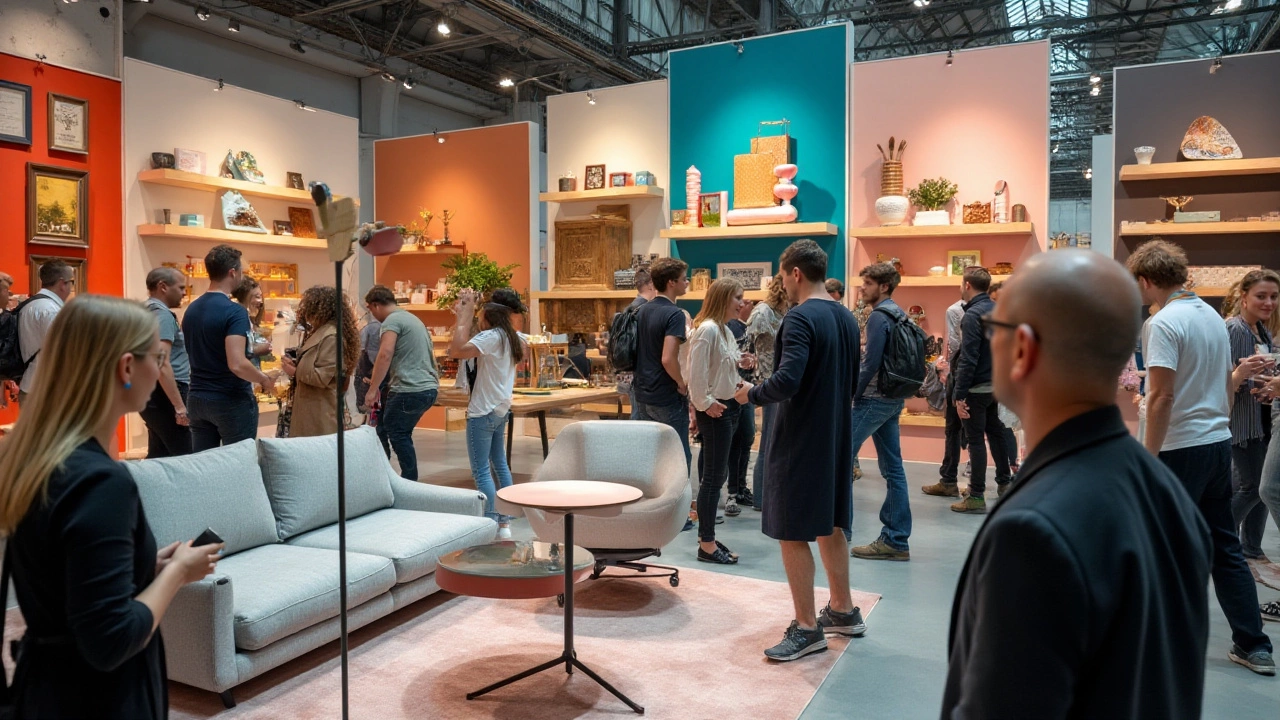
Factors Affecting Gray's Popularity
Gray furniture has seen its heyday as the foremost choice for those seeking neutrality in their home decor. The versatile nature of gray furniture allowed it to easily blend with various home styles, from sleek modern designs to warm rustic themes. However, the surge of new design trends and shifting consumer preferences have gently nudged gray off the pedestal it once proudly stood on. The advent of vibrant colors, natural textures, and a growing interest in sustainability are some of the many factors challenging the preeminence of gray. As society evolves, so do our tastes and our affinity for what's perceived as trendy and timeless. Consumers today are increasingly drawn towards bold statements and personalized touches within their living spaces, often at the expense of subdued gray shades.
One significant factor affecting the popularity of gray is the natural human yearning for change and novelty. People often seek out what feels fresh and innovative, which can lead to the decline of once-beloved trends like gray furnishings. The digital age, with its barrage of constantly updated home decor ideas on platforms such as Instagram and Pinterest, has accelerated this cycle of change. Interior designers have noted a rising inclination towards rich, earthy tones, and jeweled hues that contrast sharply with gray's muted understatement. According to renowned interior designer, Alex Papachristidis, "People are wanting more warmth and character in their homes, steering away from the sterile feel that gray can sometimes exude."
Moreover, the ongoing discourse around mental health and the pursuit of wellbeing has also had a profound impact on interior color choices. Psychologically, color can influence mood and environment dramatically. Where once gray was lauded for its calming neutrality, it is now sometimes considered too subdued or uninspiring, especially in spaces where occupants spend a significant amount of time. As people increasingly prioritize their mental health, creating stimulating or comforting environments with lively or warm colors has taken precedence. Homeowners are experimenting more with color, often encouraged by a growing body of research that underscores the psychological benefits of vibrant environments.
Additionally, the global shift towards sustainability and eco-consciousness has played a crucial role in reshaping interior design trends. Materials and color palettes that resonate with nature are favored, leading to an embrace of wood tones, greens, and earth-inspired hues over the industrial feel of gray. The market has seen an influx of natural materials being favored over synthetic ones, aligning gray furniture less with the ideals of sustainability many are now striving towards. An interesting survey by Interior Design Magazine reported that 58% of respondents are now more inclined to choose eco-friendly and natural materials, impacting the color and texture choices that manufacturers are offering in their new furniture lines.
In this rapidly changing climate of interior aesthetics, it's also crucial to consider the role of personalization. The emergence of DIY and custom furniture options has enabled more homeowners to venture beyond the monotone traps. People are keen on making statements that reflect their individuality, opting for eclectic and vibrant combinations rather than standard gray furniture sets. This grassroots movement towards personalization is redefining how we perceive traditional furniture colors, nudging our choices toward a broader spectrum.
Alternative Color Trends
As we navigate away from the neutral embrace of gray furniture, a vibrant spectrum of colors is making waves in the interior design landscape. Bold and daring, these hues are ushering in a new era where personality and emotion color our living spaces. At the forefront of this movement is emerald green, a shade that recalls the tranquility of nature while imbuing rooms with a sense of luxury. It pairs sophistication with an inviting warmth, offering a striking alternative to gray's muted tones.
Another color trend gaining traction is navy blue. This deep, rich hue adds a touch of classic elegance to any room. Its versatility matches both modern and traditional aesthetic whims, making it a favorite among designers. What’s fascinating is how navy serves as an anchoring hue, akin to gray, but with a more dynamic presence. It's often said that while gray whispers, navy commands.
Elle Decor notes, "Navy blue is the new black in interior design, creating a canvas that complements brights and neutrals alike."
Not to be overlooked are the earthy terracottas and warm ochres that have drawn inspiration from the rising mindfulness and sustainability movements. These colors embody the nurturing qualities of the earth, often suggesting a subtle approach to bringing the outside in. Terracotta, in particular, offers a grounded but stylish option, reminiscent of sunbaked landscapes that warm the heart and home.
For those seeking a serene aesthetic, pastel tones are generating quite a buzz. Soft and airy, pastels like blush pink and sky blue can soften the sharp edges of modern minimalism, adding a whisper of color without overwhelming the senses. They are perfect for those who appreciate subtlety but want to avoid the starkness of gray.
Impact on Home Decor
These furniture trends reflect a broader shift towards personal expression in home decor. Homeowners are increasingly eager to inject their spaces with colors that resonate with their identities, moving away from the homogeneous treatments of the past. Of course, this newfound boldness requires a bit of confidence and an eye for harmony. Combining these trending shades requires understanding contrasting and complementary palettes, a skill that grows with practice and experimentation.
Across living rooms, kitchens, and even bathrooms, use of color is expanding. It’s not uncommon to see furnishings in vibrant hues paired with neutral or muted walls, creating a striking balance that both captures attention and soothes it. These colors not only influence mood but can visually alter spatial perceptions, making smaller rooms appear larger or cozier.
| Color | Popularity Increase (2023-2025) |
|---|---|
| Emerald Green | 15% |
| Navy Blue | 20% |
| Terracotta | 18% |
| Pastels | 12% |
In a world where we continually strive to find balance, the choice of furniture and color takes on new significance. Whether it be the tranquil charm of pastels or the majestic allure of emerald, these shades are ready to step in and fill the void left by the potential decline of gray, offering endless possibilities for reinventing our cherished spaces.
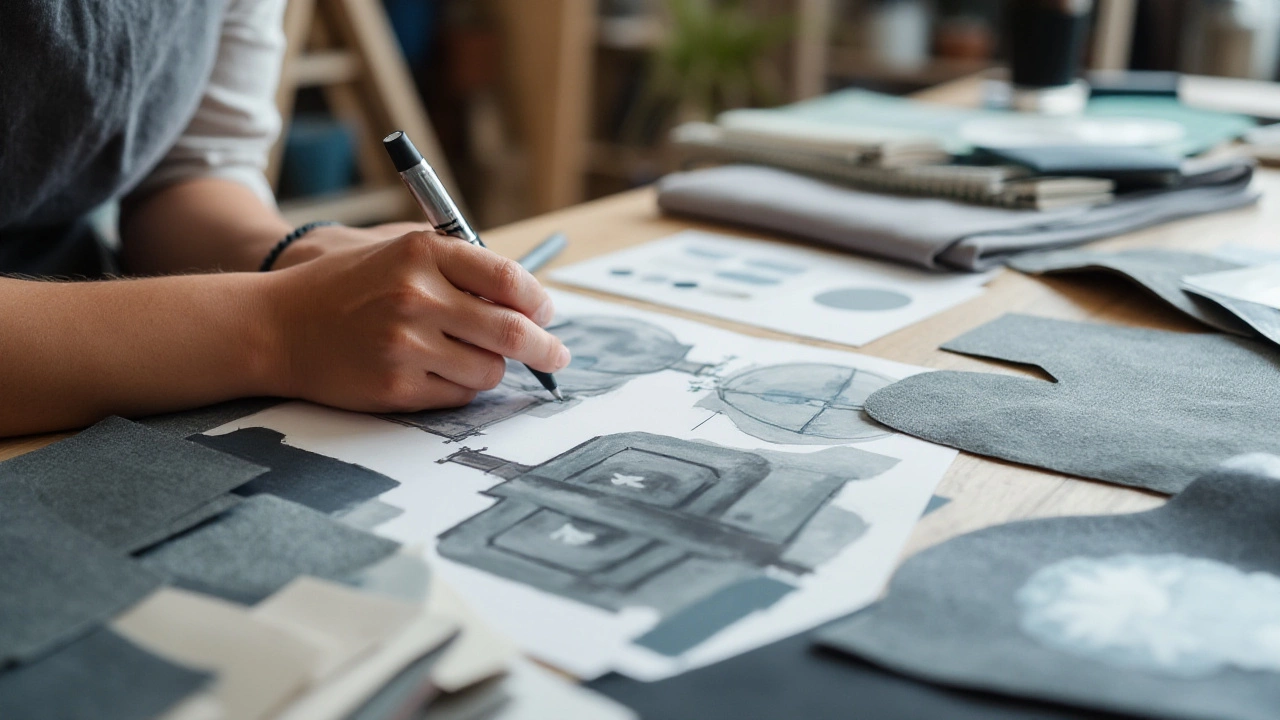
Future Outlook for Gray Furniture
As we cast our eyes to the horizon and ponder the future of gray furniture, it becomes apparent that while trends come and go, certain elements have a knack for endurance. The trending color palettes might shift like the tides, but the appeal of gray's neutrality remains in its versatile appeal and ability to adapt to a plethora of design styles. Though whispers of its decline circulate, gray furniture may not be exiting the stage anytime soon. Designers and homeowners alike continue to exhibit a fondness for this elegant hue, especially in spaces where mood and tone play significant roles.
The color's inherent adaptability remains one of its strongest assets. Even as bolder, richer colors gather traction in the world of interior design, gray effortlessly complements these hues. By subtly anchoring a room, it allows for more adventurous shades to dance across the space without risk of clashing. This quality is invaluable, making gray a steadfast choice for those keen on experimenting with their interiors while maintaining a touch of timelessness. As design enthusiasts continue down the path of personalization, gray serves as an ideal backcloth, balancing creativity with sophistication.
"Gray is not just a trend; it's a canvas," noted renowned interior designer Jessica Lynch in a 2024 interview with Design Weekly. "It allows the homeowner to bring their personality into their space without overwhelming it."
Beyond its aesthetic flexibility, the continued expansion of technology in furniture manufacturing reinforces gray's staying power, too. New finishes, textures, and fabric technologies play a key role in modernizing gray furniture, preventing it from becoming stagnant. Advance coatings that provide durability against scratches or spills, for example, enhance gray's practicality in the family home. With such innovations, owners can enjoy the elegance of gray without sacrificing functionality or resilience, which in itself adds layers of appeal to potential buyers.
Adding metrics to this conversation, a 2023 market survey revealed that gray remained among the top three most chosen colors for upholstered furniture, showing no significant dwindling in its popularity despite the rising wave of earthy and pastel tones. The challenge lies not in gray's survival but how it continues to redefine itself in a world increasingly driven by individualism and diversity. For retailers and designers looking to forecast their offerings, understanding this dynamic demographic preference could offer insightful benchmarks or adjust sales strategies.
In closing thoughts, the continued relevance of gray furniture may heavily depend on its role as a complementary hue: supporting the shift towards sustainability and eclectic mixes in home decor. The future isn't necessarily bleak for gray; rather, it’s an invitation to evolve alongside changing tastes while preserving those elements—which initially charmed many—that still hold value today. Equipped with innovation and creativity, gray might just surprise us, shaping spaces in ways we're yet to fully appreciate.
Mixing Gray with Other Colors
Exploring the art of mixing gray furniture with other colors can be a delightful adventure for any homeowner eager to breathe new life into their space. Gray, a wonderfully neutral canvas, offers the perfect backdrop against which various hues can pop and complement. Consider pairing gray with rich and bold colors like teal or mustard; these shades can create a vibrant contrast that invigorates a space. Meanwhile, softer tones such as blush pink or baby blue can result in a calming atmosphere, ideal for bedrooms or meditation spaces. Home decor enthusiasts cherish gray's natural ability to adapt, allowing it to play nice with an array of colors while maintaining a sense of sophistication.
Pattern and texture are invaluable allies when working with gray in design. Introducing rich textures like velvet or wool in complementary colors can add a depth of character that monochrome simply cannot achieve. Imagine a graphite gray sofa accented with a luxurious emerald green plush throw and patterned cushions; the result is both dynamic and welcoming. Furthermore, interior designers often suggest using natural elements such as wood or greenery to marry warm elements with the cool nature of gray. Interior design experts like Sarah Barnard note,
"Gray is inherently grounding. When paired with the right textures and colors, it can turn any space into an inviting oasis."
Let's delve into some timeless combinations that have captured the imagination of designers and homeowners alike. First, gray with white provides a clean, modern look that never goes out of vogue. This duo is perfect for those who love a minimalistic approach but want a touch of elegance. Another stunning combination is gray paired with copper or gold accents – a synthesis that exudes luxury and warmth, crafting spaces that feel regal without being overbearing. And don't discount the brilliance of combining grays with varied shades of itself! A palette from light ash to deep charcoal can make for a sophisticated monochrome masterpiece.
Aside from aesthetics, there's a psychological aspect to consider in mixing colors. According to color theory, gray often exudes practicality and reliability, and when blended with other colors like blue or green, it can enhance feelings of calm and stability. Harnessing this knowledge, decorating with a purpose transcends pure aesthetics, making rooms not only more palatable visually but also more enjoyable to inhabit. Homeowners who wish to explore this psychological impact may find it useful to refer to color harmony guides, which lay out the emotional effects of different colors and combinations. Whether you lean towards the tranquil or the vibrant, understanding the emotional nuances can significantly influence your choice of hues.
| Color Pair | Effect |
|---|---|
| Gray & Teal | Vibrant contrast, lively |
| Gray & Pink | Calming, soothing |
| Gray & Gold | Warmth, luxury |
| Gray & Wood | Grounded, natural |
For those embarking on the journey of mixing gray with other colors, it's about balance and experimentation. Start with your primary pieces like a gray couch or table, then gradually introduce accompanying colors through accessories and furnishings. Use the rule of three: select one dominant color, a secondary color for support, and an accent color for a pop! Consider the light in the room as well, as natural or artificial light will affect how your chosen colors appear and interact. With endless combinations to explore, the creativity unleashed can not only renew your living space but also breathe new life into the much-loved gray furniture.
